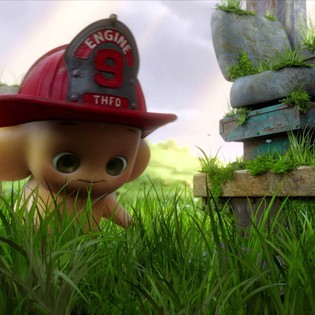
Does she have what it takes to fight to protect her peaceful village from the encroaching threat of the gods’ mysterious enemies, the “Oni”? Featuring the voice talent of Craig Robinson, Momona Tamada, Anna Akana, George Takei, and Archie Yates. In a world filled with Japanese mythological gods and monsters, one of the creatures’ free-spirited daughters, Onari, is determined to follow in the footsteps of the mighty heroes of lore, but her unique powers are yet to be revealed. Moom has screened in official selection at a number of international film festivals including the Tokyo International Film Festival on 29 October this year.A lushly animated celebration of Japanese culture from Netflix and Tonko House, makers of The Dam Keeper, Moom, and Pig: The Dam Keeper Poems. I was so impressed by that and thought he really gets the feeling of the Buddhist spirit.” (source: Hollywood Reporter) “Working with the editor Bradley Furnish, was fascinating in the original book, I wrote that the memories sort of dissolve in the air, and Bradley-san added the sound of a child’s laughter as they popped like fireworks.
#Moom tonko house free#
Granted I only have 1 1/2 minutes of the film to go on but everything indicates this is a touching film that poignantly examines what it must be like for Moom to be a memory trapped without release, especially when he is instrumental in setting so many other memories free in a visually-pleasing style that Kawamura is delighted took a different tack to the book.

The film what Kawamura refers to as a “Japanese mentality” with a more American style of animation such as that employed by Pixar, the result of Tonko House being founded by two ex-Pixar Japanese animators Daisuke “Dice” Tsutsumi (raised in Japan) and Robert Kondo (raised in USA). It’s a touching idea that finally beautiful expression in Moom, a 13-minute short film from Tonko House, who gave the Oscar-nominated The Dam Keeper, which adapts the luminously lovely and deeply meaningful ideas in Kawamura’s bestselling book.

If you look at the old one that you had been using every day, it looks like a corpse, right? I thought about why it suddenly looks like a corpse and realized it’s because between the object and its owners there are memories, like a soul.” (source: Hollywood Reporter) “Like when you get a new wallet and you transfer the cards, notes and coins. “The origins of the story are in Japanese animism, the concept that there are gods present in every object, something I’ve always been really captivated by,” says Kawamura. I am a sentimental guy, investing all my experiences with special significance, an emotional attachment that extends to all the things I own or have owned.Įven though I am able to part with possessions I no longer need – you won’t see me on Hoarders Australia anytime soon, assuming such a program exists – I can well understand what Genki Kawamura, author of Moom, means when he says the items that we have owned are indelibly imprinted with the memories of all the things we did while we owned them.ĭrawing from Buddhist and animistic traditions, which teach that all objects natural and man-made have a spirit within them, Moom centres on the idea that our possessions come with all these memories pre-attached that remain with these objects even after we discard them.

While helping his new friend to understand this fantastic world they live in, Moom finds she may be able to help him. One day, he encounters another memory stuck in this world just like him.

Unlike other memories, Moom is a memory stuck in this mystical land. Each memory is released from their object when they are ready to let go. The story of Moom takes place in a mystical land where memories are characters attached to forgotten and discarded objects.


 0 kommentar(er)
0 kommentar(er)
